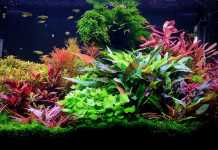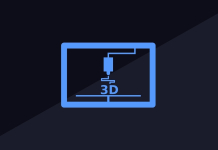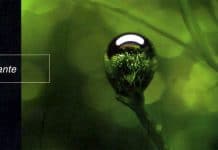The Walstad’s method
Q. Moreover you don’t dislike Walstad techniques. You claim that good fertilization on water column can replace ground fertilization, and that it is even possible maintaining a tank without water changes. This is more or less our approach: we try to understand plant needs, avoiding to use fertilizers when unnecessary.
A. I know her personally and Dorothy Reimer as well. The latter perhaps is somewhat a mentor to her as well as many in the Aquatic Gardener’s Association and the Aquatic plants mailing digest (APD). You’d have to ask her directly. We had a good trip together at a speaking event in Australia together.
My view has always been observational. If someone can and has done something a certain way, then the method is clearly valid. She showed that. Supported it, got many things correct, a few things incorrect, but unlike myself who did not write a book back in 1998, I also had a few things wrong myself, but no book for people to point what those things were.

Soil works very well and is easy for most people. It provides a back up. It can be inconsistent for new hobbyist however. They can make a mess. They can not follow the advice and take short cuts. Then such methods get a bad name. Then people say/claim it does not work.
The largest factor I think preventing more hobbyist from adopting the method for at least 1 or more of their tanks boils down to one basic issue: a lack of nice aquascapes using the method. That’s changing and many higher levels aquascapers are starting to try the method and have stunning results and so much easier care and routines.
A pretty scape (or an ugly one) does not define a method. A nice aquascape can be forced with any method. It might be a lot more labor and work than a different method. But it can be done if the hobbyist is skilled.
I wanted to take a different approach back in the early 2000’s than her approach just to see about algae and the water column.
So I estimated non CO2 plant growth rates based on CO2 gas amplified growth rates, which were about 10-20X faster with the addition of CO2 gas enrichment. So I took EI and cut that into 1/20th dosing. I dosed once a week, fairly easy routine. Long intervals between water changes. Much less trimming. This is what many planted hobbyists say is their goal. Even the ones who use the CO2 gas.
But to be clear, the hobby would not be anywhere near what it is without the CO2 gas. That makes intensive gardening possible. But that’s also a lot of labor and work to keep a well trimmed and groomed planted tank.
But I like to keep several tanks, so more are going to be non CO2. Shrimp breed better and many fish are happier in non CO2 tanks, they just have far fewer issues than CO2 tanks, less algae, more stable etc.
Q. Could you, please, elaborate on this? Do you find that tanks work better with no CO2 enrichment? I find them even more difficult to care instead.
Which is the specific relationship between CO2 and algae?
A. Non CO2 tanks are easier, but hard for many newbies because they do not listen to all the advice, they just hear “no CO2” and like that part.
Many add too much light also, but that’s true for CO2 enriched tanks also.
Algae is very minimal in the non CO2 methods: sediment rich, water column rich or both rich. Black brush algae (BBA) is almost non existent. Even if any algae does occur, often it’s easy to remove manually.

Q. OK, let’s go on…
A. As far as water column versus the sediment: both locations for nutrients is the best management. But either can work well isolated also, many do not have access or the $ for a commercial sediment like ADA aqua soil, many will just use sand. This gives them a good option. But overall, this applies to CO2 gas enriched aquariums also: both locations works best for management for fertilizers.
You have a back up for each method basically. One runs out, the other serves as a redundant source for fertilizers.
Q. Your approach seems quite eclectic…
A. I suppose I hold no bias towards any methods, mostly because I have mastered all the various methods to a high level: e.g., I can aquascape with any of them well.
When you get to this point, then none of the ego driven banter on forums bothers you and you can rip into those who claim their one method is best for everyone.
Ego is the anesthesia that dulls the pain of ignorance.

As we all have different goals, no single method will ever be all things to all hobbyist goal’s. So in order to help more people and to not be stuck in a singular method, it is wiser to learn how to use each method well. Just because you might have trouble with a method, does not imply others will.
Some methods such as the older PMDD had a limiting factor as part of the method, those are not that great for that reason… but they still work, they are just rarely the best management for most people’s goals. As such, not many use them today.
Sediment + water column dosing methods work well for most people’s goals.
CO2 is the hardest thing for most people, particularly in the USA as they seem to think more and more high powered light is best.
Europe and Asia have less issues with this however.





















